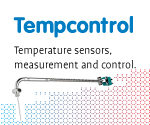Heat flows from a body at a higher temperature to a body at a lower temperature. Conduction is the flow of heat within and through a body itself wherever a temperature gradient exists. The transfer of thermal energy occurs via collisions between molecules. In gases, conduction occurs via molecular collisions, but also via diffusion due to the random motion of molecules at the microscopic scale. Conversely, convection is the transfer of thermal energy between bodies (or from body to fluid) via the macroscopic bulk motion of a gas or fluid medium.
For the heat transfer trough a gas different regimes can be determined, depending on the gap between the bodies or surfaces involved as a function of the mean free path length (MFP)
| Area | nr | Regime | Minimum gap size | Maximum gap size | Description |
| Free molecular & mixed | 1 | Free molecular regime | Gap > 0 MFP | Gap < 3.3 MFP | Low pressure environment. Molecules bounce between high and low temperature surface without significant intermolecular collisions |
| 2 | Transitional regime | Gap > 3.3 MFP | Gap < 100 MFP | Both free molecular and conductive transfer are present | |
| Continuum medium regime * | 3 | Gas conduction dominated | Gap > 100 MFP | Gap < 10.000 MFP | Microgravity or small gaps. Heat transfer through the gas by conduction |
| 4 | Mixed gas conduction and convection | Gap > 10.000 MFP | Gap < 100.000 MFP | Natural convection start to interact with gas conduction | |
| 5 | Natural convection dominated | Gap > 100.000 MFP , Re2<0.1 Gr | Infinite | Natural convection flows dominate the heat transfer | |
| 6 | Mixed forced and natural convection | Gap > 100 MFP, Re2>0.1 Gr | Infinite | Low velocity of medium, where buoyancy forces are of the same order of magnitude as the inertial forces | |
| 7 | Forced convection | Gap > 100 MFP, Re2>10 Gr | Infinite | Forced velocity of medium over surfaces dominates the heat transfer at the boundary layer |
* Valid for natural convection. Forced convection dominates the gas-conduction in the full continuum medium regime. Here, Re is the Reynolds number and Gr is the Grashof number. See the “Dimensionless Numbers” section for a description of these numbers.
In the transitional regime the free molecular heat transfer and gas conduction of the continuum can be considered to be in series. However, in the regime of mixed Gas conduction and convection the two heat transfer modes can be considered as parallel paths. With these considerations, a basic formula can be constructed that is valid for all regimes (excluding forced convection). For each regime a basic heat transfer formula is presented, which are later combined into one.
Determining the heat transfer coefficient
Usually, an engineering goal is to determine the heat transfer coefficient for a specific configuration. To do this, use this information as follows:
- First determine mean free path (MFP) and typical dimension (i.e. gap size) for the gas flow configuration of interest.
- If Gap size>100.000 MFP, determine the Reynolds and Grashof numbers for the flow.
- Determine the flow regime from the table above.
- Go to the relevant section for the calculation of the heat transfer coefficient.
Mean Free Path
The mean free path length $\Gamma$ is defined as:
$$\Gamma = { \frac{k_{B} T}{\sqrt{2} \pi d^{2} P}} $$
Where $k_{B}$ is the Boltzmann constant, T is the temperature in K, P is the pressure in Pa and d is the kinetic diameter of the gas molecule in meters. The following values are used:
$k_{B} = 1.3806488 \cdot 10^{-23} \ J/K$
$T = 295 \ K$
$d_{air} = 3.7 \cdot 10^{-10} \ m \quad \text{average}$
For other gases, the values for the kinetic diameter can be found online.
The Figure below shows the mean path length of hydrogen in the pressure regime between 1 and 100.000 Pa.
